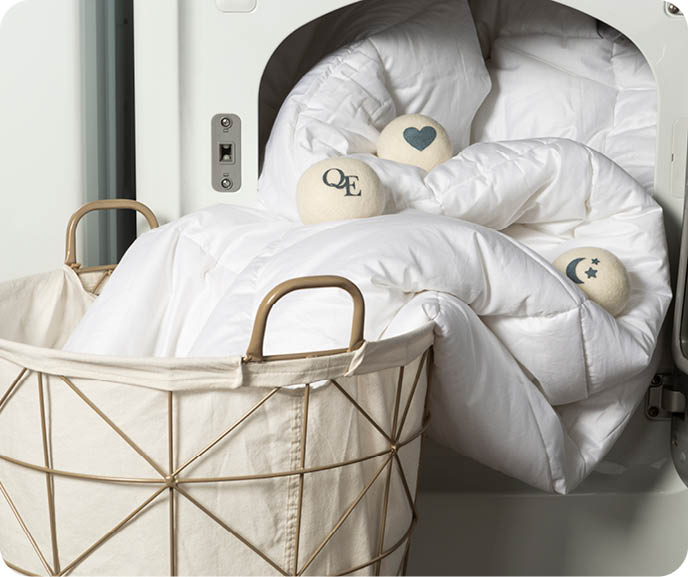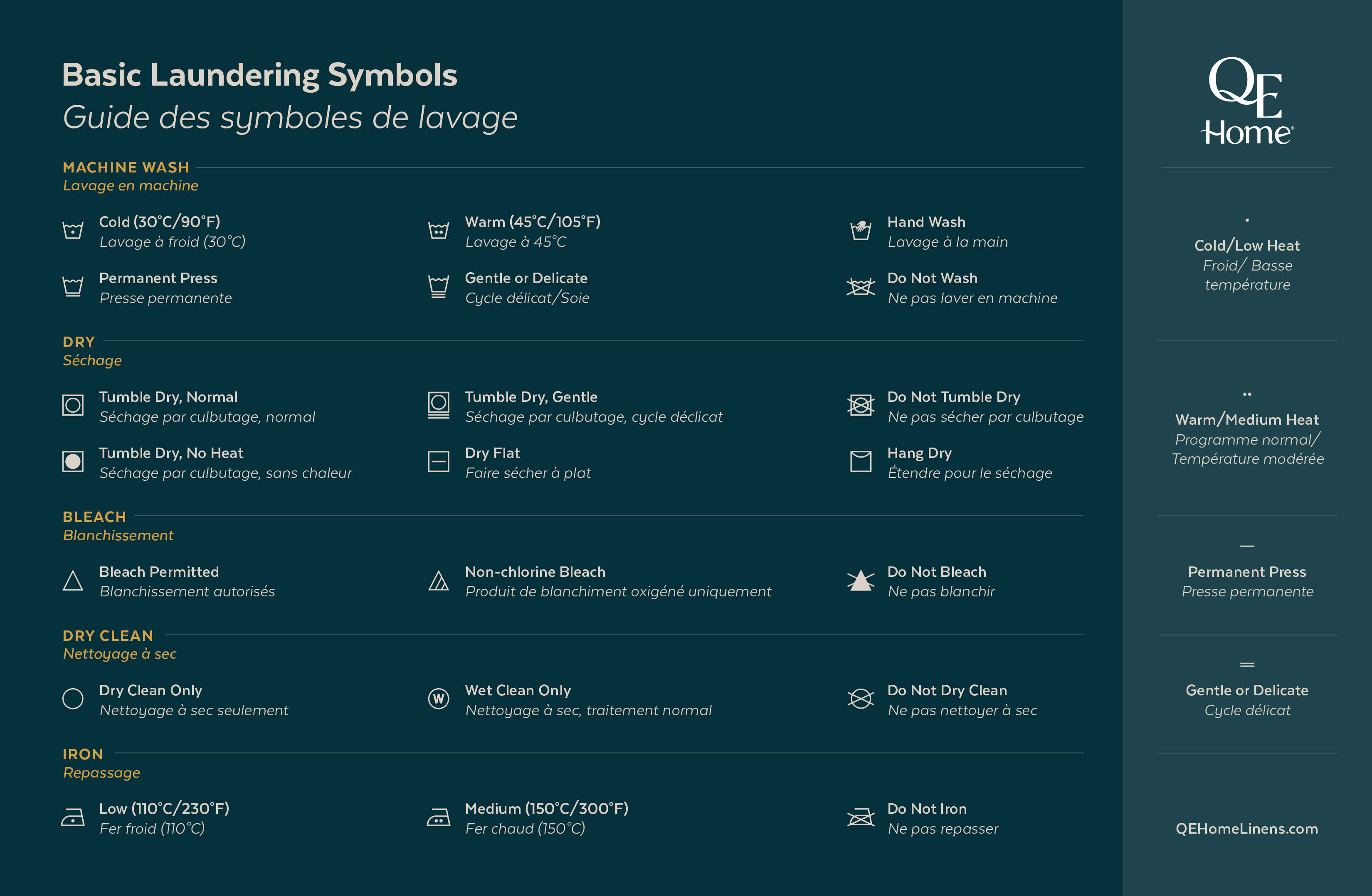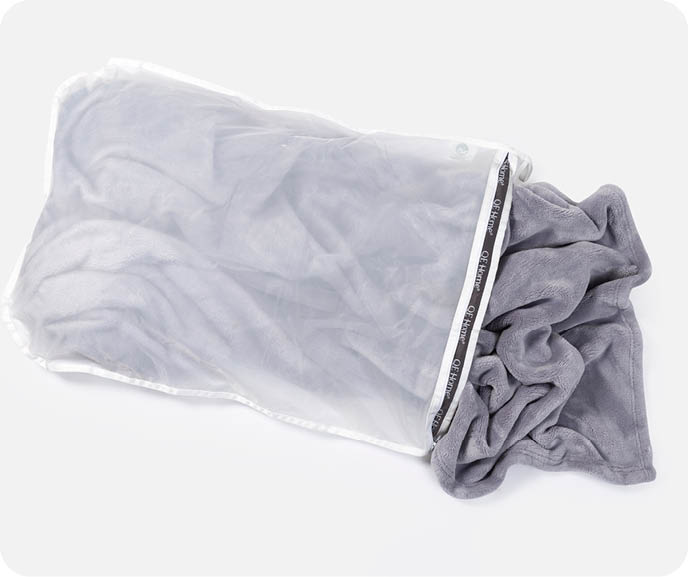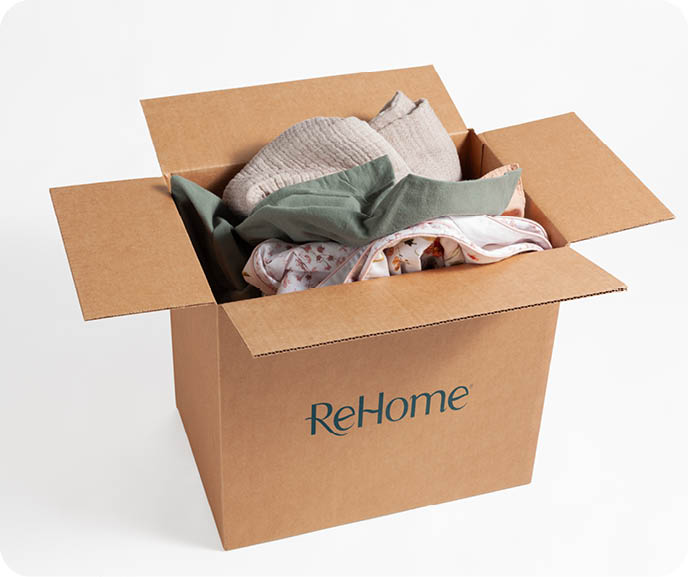Laundry Tips to Extend the Life of Your Bedding
2024 Feb 25th
Today, we're exploring an often-overlooked aspect of sustainability: care. It's not just about how products are made but also how they are cared for during their lifespan. Your bed isn't merely a place to lay your head; it's your cozy sanctuary where you unwind after a long day. So, let's give our bedding the TLC it deserves to keep it as comfy and inviting as when we first got it.
If you've shopped with us before, you know that we're committed to crafting a bedtime experience that's both luxurious and eco-friendly. However, it's essential to recognize that the sustainability of our products depends just as much on how you, dear sleeper, use and maintain them.
We recently sat down with our in-house experts, Joe, our Sustainability Manager, and Gen, our Senior Textile Designer, to discover their recommendations for ensuring our products stand the test of time while maintaining top-notch quality and comfort. Each tip aims to extend your bedding's lifespan while also reducing environmental impact—a win-win for you and the planet.
So, let's delve into the insights from our experts that can truly transform how you care for your bedding. From water temperature to detergent choices, these tips will not only preserve the quality of your sheets and duvet covers but also promote a more sustainable lifestyle.
Tip #1 Opt For Cold Water Cycles
Why Cold Water Laundry Cycles are Essential
Using cold water cycles when washing your bedding can significantly extend its lifespan, especially for certain fabrics we carry here at QE Home. Cotton and TENCEL™ fabrics, which you may also find in your wardrobe, thrive when washed in cold water. Cold water is gentler than hot water, preventing excessive wear and tear on fibers, thus reducing the likelihood of colour fading and shrinkage compared to hot cycles.
Particularly with TENCEL™ fabrics, such as our Eucalyptus Luxe and BeechBliss sheets known for their lustrous feel and silky drape, washing in cold water can help preserve these qualities and prolong your investment.
Heating water accounts for approximately 90% of your machine’s energy use, so even switching from hot to warm water can halve your energy consumption. Switching to cold water cycles will not only reduce energy usage but also promote a more eco-friendly laundry routine, ultimately saving you money on bills!
Isn't Hot Water Necessary for Stain Removal and Sanitization?
The idea that higher temperatures clean clothes better has been passed down from previous generations, and indeed, there was once some truth to this. However, with advancements in washing machines and laundry detergents, low-temperature wash cycles today are vastly improved compared to their counterparts from decades ago.
Tip #2 Tumble Dry On Low
Another simple yet effective way to extend the life of your bedding (and clothing) is to be mindful of how you dry them. As mentioned in the previous tip, high heat can be harsh on fabrics, and the dryer is notorious for shrinking beloved textiles. Tumble drying on low heat is the way to go for most of us here in Canada. Better yet, hang your laundry out to dry if you can!Which Types of Items Benefit Most From Drying On Low Or No Heat?
Our bestselling luxury sheeting lines—BeechBliss, Eucalyptus Luxe, and Bamboo Cotton—will all last longer if you avoid high heat. In general, all bed sheets are better cared for with gentle, low-heat settings. Duvet covers, particularly those with special details and finishes, absolutely need to be dried using the lowest heat setting possible. If feasible, we always recommend hanging our Designer Linens to dry or using the air dry setting on your dryer.
Which Fibers And Fabrics Benefit Most From Drying On Low Or No Heat?
In addition to cotton and TENCEL™, fabrics like wool or silk definitely require delicate drying routines. Synthetics can also be prone to heat damage, as can garments with elastic components, such as underwear and activewear.
Not only does tumble drying on low preserve your bedding and clothing, but it also significantly reduces household energy use. So, next time you use your dryer, remember to select the low-heat option. Your laundry and your wallet will thank you in the long run!
Tip #3 Swap Dryer Sheets For Wool Dryer Balls
Though it may be number three on this list, dryer balls were actually Gen’s number one tip. These reusable and eco-friendly alternatives to traditional dryer sheets pack a powerful punch when it comes to sustainable laundry care.
Unlike dryer sheets, which help fight static and add fragrance to laundry, our wool dryer balls are not laden with synthetic fragrances and chemicals, yet they achieve the same goals naturally. Made from 100% natural wool fibers, our dryer ball set comes with a naturally scented essential oil blend, making them a safe and healthy option for those with allergies or sensitive skin. Free from harsh additives and irritants, they are the easy choice for anyone who prioritizes natural, earth-derived ingredients in their home.

Linen Love Wool Dryer Ball Sets & Laundry Blends
How Do Wool Dryer Balls Prolong The Life Of My Bedding?
Wool dryer balls help to soften fabrics naturally, thereby eliminating the need for fabric softeners, which are now widely understood to be damaging to the integrity of fibers and are loaded with unnecessary chemicals. Dryer sheets work by coating your fabrics with a softening agent, which tends to build up over time and, in the case of towels, can make them less absorbent.
On the other hand, wool fibers gently massage the fabric your bedding and clothing are made from, leaving soft and static-free results every time, without the use of any added chemicals. Au naturel!
How Do Wool Dryer Balls Reduce My Environmental Impact?
When compared to dryer sheets, dryer balls win the sustainability battle hands down. As single-use products, dryer sheets are responsible for producing needless amounts of waste and emitting potentially harmful chemicals into the air. Our Wool Dryer Balls will last up to a thousand washes and are inexpensive to begin with. Just imagine the money saved!
The most significant benefit, however, is reduced drying time (by up to 50%). When tossed into the dryer with your laundry, these woolen wonders work to separate your items, preventing the dreaded tangle and clumped effect that keeps things damp for longer. The sustainability benefit here is twofold: lower energy usage and longer-lasting linens.
Can I Refresh My Wool Dryer Balls?
Yes! If you wish to give your dryer balls an easy refresh, you can throw them in a wash cycle. This is one of the cases where a hot wash and high-heat drying cycle make sense. While we sell our Wool Dryer Balls in sets of 3, Gen mentions she uses many more per load of laundry. So, you can definitely increase the number to enhance efficacy, especially over time as your old dryer balls gradually show signs of aging.
Tip #4 Wash Similar Fabrics With One Another
You’ve heard of separating your loads by colour, but separating them by fabric type is a lesser-known laundry tip that distinguishes the savvy from the just-starting-out. Sorting your laundry into similar fabrics means that you can adjust the washing cycle and water temperature accordingly. Each load will receive optimal treatment and also prevent delicate fabrics from being prematurely worn, torn, or damaged by heavier or sturdier ones. This may also reduce pilling and lint transfer, two of the most common washing-day woes.
What Should I Know When Mixing Fabrics In The Wash?
Realistically, you may not always be able to keep fabrics completely separate, but try to do so as much as possible! As a general rule of thumb, washing like with like is a simple way to start. Durable, natural fiber bed sheets such as TENCEL™, bamboo, cotton, and linen can be safely washed together if their specific washing requirements are followed. Wool should always be washed separately. Silk should also be washed on its own or with other delicates. Polyester is generally considered “safe” to mix with other fabrics, but we recommend washing it with a protective laundry bag to prevent shedding (more on this below).
Ultimately, we always recommend following the care labels and deferring to common sense when deciding which fabrics to wash together to ensure the best results. The QE Home product team always designs our bedding items with longevity in mind, and home laundry care is an equally important piece of the puzzle!
We also made a handy visual guide to decipher laundry symbols, download the PDF here.

Tip #5 Do Not Overfill Your Washing Machine
It may be tempting to fit as many items as possible into your washing machine, but this can have several negative effects on your laundry, your machine, and ultimately on the environment. An overloaded machine will not effectively clean laundry or rinse it properly. Tangling and wrinkling are common side effects of cramming too many items into a single load.
What may seem like a time-saving approach will cost you in the long run, with higher maintenance costs for your laundry and your machine, which is subject to premature wear and tear as a consequence of this all-too-common habit.
Tip #6 Use A Specialized Laundry Bag To Protect Your Laundry (And The Planet)
Using a laundry bag during wash cycles is a nifty way to protect extra-delicate items from tangling, snagging, or stretching. Another amazing eco-friendly benefit offered by specialized laundry bags is microfiber capture during the rinse cycle, preventing shedding from contaminating the rest of your laundry load and, most importantly, avoiding its entry into waterways.
Our innovative Mighty Mesh Laundry Bag does exactly that, with its fine mesh nylon design that acts as a filter for microplastics, ensuring your seemingly innocuous laundry routine isn't a contributor to plastic pollution in our environment. In addition to its protective benefits for delicate or small items like knits, lingerie, or socks, the QE Home exclusive Mighty Mesh bag is a laundry essential for any earth-conscious individual—making it an excellent gift, to boot! Curious to learn more? We made a video just for you! Watch it on YouTube here.
By incorporating this step into your laundry routine, you will definitely reap the benefits of longer lifespans for your most treasured items, while safeguarding the health of our planet.

Tip #7 Wash Polyester Using A Gentle Cycle
Polyester is known for emitting microplastics, as these fibers constitute polyester fabrics. Studies have shown that by washing on a gentle cycle, microplastic shedding is reduced by up to 70%. This fact alone indicates that the integrity of the product is better maintained through a gentle wash practice.
As we learned in our previous tip, using our Mighty Mesh Laundry Bag to wash polyester bedding or clothing can safely capture any microfibers before they enter waterways. We highly recommend this product not only for QE Home recycled polyester or microfiber products but also for any other polyester items that are washed, such as outdoor gear or activewear.
Tip #8 Wash Items With Their Zippers Closed Shut
When washing items with zippers, such as our designer duvet covers, ensure that the zippers are closed. This prevents other items from getting lost within (we’re looking at you, pillowcase) and decreases drying time. Another important consideration is reducing the risk of damage that the zipper’s “teeth” can cause to other items—and potential damage to the zipper itself.
Through proper care to preserve the quality and longevity of your bedding, you'll find yourself needing to replace them less frequently. This not only saves you money but also contributes to environmental sustainability.
Tip #9 Discover The Laundry Benefits Of White Vinegar
As it turns out, this longtime pantry staple is a laundry room staple, too! White vinegar offers a plethora of benefits when washing your bedding, clothing, and towels:
- Natural fabric softener
- Eliminates odours
- Lifts stains
- Increases colour fastness
- Prevents lint and pet hair from clinging to laundry
Try it for yourself! Next time you put a load of towels in the wash, add a cup of distilled white vinegar before starting the cycle. You'll be surprised at how fluffy and fresh they emerge! Additionally, you can clean your washing machine itself with this magic ingredient. A few times a year, run a complete wash cycle with the drum empty, adding 2 cups of white vinegar to a hot water cycle.
Tip #11 Don’t Add To Landfill, Recycle Your Old Bedding
If you've followed the ten previous tips, congratulations! You can rest easier knowing that your diligent laundry habits will help extend the life of your bedding.
Eventually, when your items do reach the end of their lifespan, we offer an incredible, sustainable solution for you to bid them a respectful goodbye. Our textile recycling program, ReHome, allows our customers to return their old QE Home products in exchange for store credits (usable for online orders) to replace them with something new.

How Does ReHome Work?
Powered by SuperCircle, items sent back to be recycled are transformed into something new. SuperCircle works with the world’s leading brands to recycle eligible products. Their goal is for you to be able to follow the entire lifecycle of your specific product through the recycling process and they guarantee that all items are being diverted from landfill and are finding a new life. They ensure that the material that can be upcycled will make its way into new yarn and eventually textiles (think recycled denim, bedding, etc.), and the rest will be downcycled into other mixed-use items (think insulation, padding for sports equipment, etc.).
You can learn more about textile recycling over on this blog post: The Ultimate Guide to Textile Recycling.
Thanks for reading, we wish you all the best in conquering your laundry and building new sustainable habits! To learn more about how to take care of your specific QE Home products, visit our Laundering & Fabric Care page.

